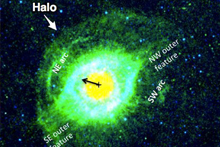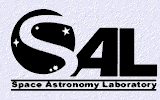
Projects

- 1. Millimeter wave spectroscopy: spectral surveys to study molecular synthesis in the circumstellar envelopes of late-type stars are being carried out at the Nobebyama Radio Observatory and the Arizona Radio Observatory

- 2. Millimeter/Submillimeter-wave imaging: Imaging observations of evolved stars envelopes, star forming regions, and galaxies in various molecular lines have been made with the Submillimeter Array (SMA), the Very Large Array (VLA), and the Very Long Baseline Array (VLBA)

- 3. Infrared spectroscopy: infrared spectroscopic observations have been made with the Infrared Space Observatory and the Spitzer Space Telescope to study the synthesis of complex organic solids in planetary nebulae and proto-planetary nebulae

- 4. Infrared imaging: near infrared imaging observations are being made with the Canada-France-Hawaii Telescope to obtain the molecular hydrogen distribution in planetary nebulae. Mid-infrared mappings are performed with the Gemini Telescopes to derive the dust distribution of planetary nebulae.

- 5. Computer simulations of structures of planetary nebulae: the software code SHAPE is used to derive the intrinsic 3-D geometric structures of planetary nebulae

- 6. Computational calculations of molecular dynamics: quantum calculations are performed to obtain the vibrational frequencies of complex organics with mixed aromatic/aliphatic structures

- 7. Gamma-ray astronomy: Using data from the Fermi Gamma-ray Large Area Telescope (LAT) we carry out searches for isolated and binary gamma-ray pulsars, including some of the most challenging systems containing so-called 'Black Widow' millisecond pulsars.
- http://fermi.gsfc.nasa.gov

- 8. Very High Energy astronomy: By a combined analysis of Fermi-LAT and HAWC (High Altitude Water Cherenkov) data, we aim to establish the highest energy emission from pulsars, and use these results for sensitive tests of fundamental physics.
- http://www.hawc-observatory.org

- 9. Data mining: We apply statistical techniques to gamma-ray data, combined with multi-wavelength observations to try to uncover the nature of the hundreds of unassociated gamma-ray sources discovered by Fermi-LAT. Furthermore, we use these techniques to identify promising pulsar candidates from our searches.
Last update:

